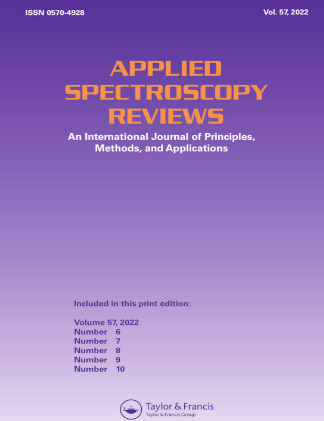生物光谱学联合化学计量学在阿尔茨海默病诊断中的应用综述
IF 5.4
2区 化学
Q1 INSTRUMENTS & INSTRUMENTATION
引用次数: 0
摘要
本文章由计算机程序翻译,如有差异,请以英文原文为准。
A review of biospectroscopy coupled with chemometrics for Alzheimer’s disease diagnosis
Abstract One of the biggest challenges of current tests for Alzheimer’s disease (AD) diagnosis is the development of high-performance, inexpensive, minimally invasive, and rapid tools that can be used in real-time. Biospectroscopic techniques coupled with chemometrics have shown these characteristics and can help to identify pathological changes in AD before the first symptom. In this review article, we highlight biospectroscopy studies coupled with chemometrics for the classification and diagnosis of Alzheimer’s disease (AD) from 1995 to September 2022. A total of 29 studies were found with the spectroscopic techniques of infrared (IR) (12/29), Raman (10/29), molecular fluorescence (2/29), and nuclear magnetic resonance (NMR) (6/29). The nature of the sample analyzed included human brain tissues (3/29), human biofluids (21/29), rats brain tissue (1/29), mice brain tissues (2/29), and mice biofluids (2/29). In studies with human participants, we considered everyone eligible without any exclusion criteria regarding the number of participants. The main chemometric approaches (preprocessing methods, feature extraction, and classification) and figures of merit used in these biospectroscopy studies are discussed. Most studies worked with 1st order algorithms and only one study with 2nd order algorithms. Using blood-based biofluids and saliva, biospectroscopy coupled with chemometrics was demonstrated to be a high-performance, minimally invasive, and label-free method.
求助全文
通过发布文献求助,成功后即可免费获取论文全文。
去求助
来源期刊

Applied Spectroscopy Reviews
工程技术-光谱学
CiteScore
13.80
自引率
1.60%
发文量
23
审稿时长
1 months
期刊介绍:
Applied Spectroscopy Reviews provides the latest information on the principles, methods, and applications of all the diverse branches of spectroscopy, from X-ray, infrared, Raman, atomic absorption, and ESR to microwave, mass, NQR, NMR, and ICP. This international, single-source journal presents discussions that relate physical concepts to chemical applications for chemists, physicists, and other scientists using spectroscopic techniques.
 求助内容:
求助内容: 应助结果提醒方式:
应助结果提醒方式:


